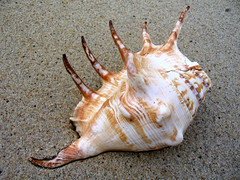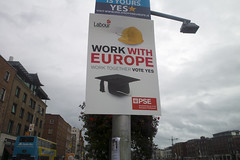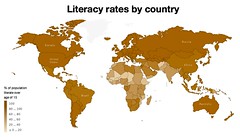| 7673813812 | what two surfaces are in contact with the outdoors? | skin mucous membranes | | 0 |
| 7673816995 | 4 signs of inflammation | redness, swelling, heat, pain | | 1 |
| 7673823642 | The 4 steps neutrophils go through to get to an inflamed area of the body IN ORDER | Leukocytosis, margination, diapedesis, chemotaxis | | 2 |
| 7673835205 | What cell of our non-specific defenses kills diseased cells by releasing chemicals, not phagocytes? | Natural Killer cell | | 3 |
| 7673837362 | Compliment: | forms a membrane attack complex, opsonization, enhance inflammation, and stimulates cells to make antibody | | 4 |
| 7673850034 | Which part of the adaptive (specific) Immune system attacks extracellular antigens? | humoral | | 5 |
| 7673853222 | attacks diseased or foreign cells? | cellular | | 6 |
| 7673856637 | which one only responds to antigens presented on a cell surface? | cellular | | 7 |
| 7673859276 | cells that make and release ab's? | Plasma cells | | 8 |
| 7673862584 | APC that can be found in the epidermis? | dendritic | | 9 |
| 7673866867 | cell that becomes immunocompetent in the bone marrow? | B cell | | 10 |
| 7673871422 | Cell produced after a primary response that can produce a stronger secondary response if re-encounters again | memory cell | | 11 |
| 7673874230 | cell that releases histamine in connective tissue | mast cell | | 12 |
| 7673879378 | cell that attacks a diseased cell displaying a specific antigen and kills it using chemicals | cytoxic t cell | | 13 |
| 7673886646 | name of lymphocyte that enhances both the humoral and cell medited immunity | helper t | | 14 |
| 7673891277 | largest antibody, first one produced in a primary response | IgM | | 15 |
| 7673898537 | vaccines exampple of | active- artificial immunity | | 16 |
| 7673901457 | antibody associated with allergies | IgE | | 17 |
| 7673905906 | fetus receiving antibodies from mom | passive- natural | | 18 |
| 7673909860 | antibody secreted on mucosal surfaces | IgA | | 19 |
| 7673912703 | natural infection an example of | active- natural | | 20 |
| 7673916204 | most common antibody | IgG | | 21 |
| 7673918599 | immune serum example of | passive-artificial | | 22 |
| 7673926618 | agglutinates with A anttiserum, B antiserum but not Rh | AB- | | 23 |
| 7673929402 | agglutinates with B antiserumm and Rh but not A antiserum | B+ | | 24 |
| 7673932955 | does not aggutinate with A or B serum but does with Rh | O+ | | 25 |
| 7673936082 | makes surfactant | Type II cuboidal cell | | 26 |
| 7673939240 | small airway with no cartilage | bronchiole | | 27 |
| 7673942093 | structure found in respiratory zone | alveolus | | 28 |
| 7673943842 | brings air to lung lobe | seecondary bronchus | | 29 |
| 7673946536 | brings air to either the R or the L lung | primary bronchus | | 30 |
| 7673949204 | main cell of alveolus | type I squamous cell | | 31 |
| 7673952816 | brings air tto bronchopulmonary segmennt | tertiary bronchus | | 32 |
| 7673954925 | broncho-constriction | parasympathetic | | 33 |
| 7673959627 | layer of serous membrane on the lung surface | visceral pleura | | 34 |
| 7673965527 | Name the three single cartilages of the larynx | epiglottis, cricoid, and thyroid | | 35 |
| 7673972782 | What enzyme is made and released by endothelial cells in the lung capillaries? | ACE | | 36 |
| 7673978285 | As the arytenoid cartilages move they change the tension on the : | true coval cords changing our vocal pitch | | 37 |
| 7673982707 | type of cartilage in the trachea | hyaline cartilage | | 38 |
| 7673987023 | what helps the lung to adhere to the inside of the thoracic wall? | pleural fluid | | 39 |
| 7673991287 | blood supply to all of the lung tissue except alveolli | bronchial circulation | | 40 |
| 7673995183 | complex of bronchi vessels and nerves that enters at the lung hilum: | lung root | | 41 |
| 7674001228 | hat comprises the respiratory membrane | type I cells, ssimple squamous epithelium | | 42 |
| 7674004078 | what comprises the glottis? | true vocal chords and the space between them | | 43 |
| 7675555032 | Resistance | force that opposes blood flow | | 44 |
| 7675559803 | Vessel length, the longer the vessel the ---------- the resistance | greater | | 45 |
| 7675562659 | Viscosity | fluid''s resistance to flow | | 46 |
| 7675568241 | Larger vessel | greatest resistance along the wall of the vessel (friction), less resistance in the center = faster flow | | 47 |
| 7675572920 | smaller vessell | friction slows most of the blood, the smaller the radius, the greater the resistance | | 48 |
| 7675581261 | What structures are especially important in controlling peripheral resistance? | arterioles | | 49 |
| 7675591257 | As the left ventricle contracts it pushes blood into the aorta and the aorta stretches, this is called the | systolic pressure ~ 120 mm HHg | | 50 |
| 7675601845 | as the left ventricle relaxes, the aortic SL valve closes, the stretched aorta reccoils which moves blood forward (elastic rebound) and creates a pressure wave or pulse | diastolic pressure ~ 80 mmhg | | 51 |
| 7675604611 | BP declines as it travels | farther from the heart | | 52 |
| 7675653390 | 3 ways blood in the veins returns to the heart | respiratory pump (abdominal pressure increases and squeezes the veins) muscular pump (muscles contract and relax around deep veins milk the veins) and sympathetic (causes veins to constrict) | | 53 |
| 7675665042 | BP= | co x R (cardiac output and resistance) | | 54 |
| 7675672937 | 3 main factors that affect BP | CO, R, and Blood volume | | 55 |
| 7675677262 | Neural controls regulate blood pressure by: | changing the peripheral resistance (altering vessel diameter) | | 56 |
| 7675688285 | cadiovascular center in medulla composed of: | vasomotor center
cardioaccelatory center
cardioinhibitory center | | 57 |
| 7675690292 | Vasomotor Center | transmits action potentials to vasomotor fibers (sympathetic fibers). MAINLY EFFECTS ARTERIOLES
in general: increases sympathetic activity increases vasoconstriction aned increases BP
affected by inputs from baroreceptors, chemoreceptors, and brain | | 58 |
| 7675710996 | Baroreceptors | sensory receptors in walls of blood vessels, respond to being stretched | | 59 |
| 7675715751 | baroreceptors located in: | aortic arch, carotid sinuses | | 60 |
| 7675726284 | Chemoreceptors | detect levels of CO2, O2, and pH in arterial blood but are more important in regulating respiratory rate | | 61 |
| 7675733026 | Chemoreceptors located in: | carotid bodies and aortic bodies near baroreceptors | | 62 |
| 7675736562 | Brain | cortex and hypothalamus affect the medulla, ex. sympathetic activation affects cardoaclatory and vasomotor centers | | 63 |
| 7675743553 | Hormonal controls | norepinephrine and epinephrine released by adrenal medulla in response to sympathetic stimulation, general vasoconstriction of vessels | | 64 |
| 7675960273 | Angiotensin II | in blood, causes vasoconstriction | | 65 |
| 7675963516 | Aldosterone | from the adrenal cortex, reabsorbs Na+(H2O) which helps increase blood volume | | 66 |
| 7675975486 | Atrial natiuretic peptide ANP | from specialized cardiacc muscle cells in atria of heart, inhibits aldosterone which decreases blood voume | | 67 |
| 7675984816 | Anti diuretic hormone (ADH) | secreted from posterior pituitary, helps rreabsorb H2O into the kidneys, which increases blood volume ancauses vasocontriction | | 68 |
| 7675993095 | Renal Controls | kidneys help control BP by keeping the blood volume stable | | 69 |
| 7676017769 | How do organs and tissu control the amount of blood flow to them? | autoregulation of capillary beds | | 70 |
| 7676029241 | Physical changes : myogenic response | helps protect fragile capillaries from force of high BP | | 71 |
| 7676037359 | Chemical changes: from WBC'ss, smooth muscle, endothelium, etc | chemicals that directly affect smooth muscle, or indirectly cause endothelial cells to release nitric oxide (causes vasoconstriction or dilation) | | 72 |
| 7676060344 | Hydrostatic pressure is higher at arteriole end,lower at | venule end | | 73 |
| 7676063487 | Osmotic Pressure | pressure needed to stop flow of solvent across semi-permeable membrane | | 74 |
| 7676076859 | 3 main components of the lymphatic system | lymph, lymphatic vessels, lymph nodes | | 75 |
| 7676079245 | Lymph | a protein containing interstitial fluid that is formed in capillary beds, once fluid enters and is carried i lymphatic vessels, it is called lymph | | 76 |
| 7676087403 | lymphatic vessels | drainage vessels, one way back to the heart | | 77 |
| 7676104138 | R lymphatic duct drains | the R upper limb, R thorax, and R side of head | | 78 |
| 7676107697 | Thoracic duct drains | the rest of the body (starts as a sac in the upper lumbar area called the cysterna chyli) | | 79 |
| 7676116966 | Each lymphatic duct drains into the | venous blood at the subclavian/internal jugular vein junction | | 80 |
| 7676119516 | Lymph Nodes | Filter lymph before it enters the blood | | 81 |
| 7676132096 | Lymphatic vessels move by muscle movement, thoracic pressure, and valves which is like venous transport but also uses | peristalsis for transport | | 82 |
| 7676134807 | Lacteals | specialized lymph capillaries located in intestinal villi, drains chyle from intestine | | 83 |
| 7676153241 | Body defends against microbes by: | inflammation,phagocytes, and lymphocytes | | 84 |
| 7676158884 | B lymphocytes become | plasma cells that make antibodies | | 85 |
| 7676162940 | T lymphocytes attack | foreign cells (cancer, viruses) | | 86 |
| 7676168285 | Lymphoid tissue is made of mainly | reticular CT | | 87 |
| 7676174062 | Lymphoid follices | tightly packed spheres, mainnly B cells | | 88 |
| 7676183034 | Lymph node ssinuses | endothelial lined channels spanned by reticular fibers and macrophages | | 89 |
| 7676187107 | lymph node outer capsule | has inwward extensions called trabeculae | | 90 |
| 7676191411 | subcapsular sinus | located below capsule | | 91 |
| 7676194334 | trabecular sinuses | in cortex next to trabeculae | | 92 |
| 7676203336 | Largest lymphoid organ | spleen | | 93 |
| 7676207709 | Funtions of the spleen | cleans blood, recycles and stores iron, stores platelets, and immune function | | 94 |
| 7676214845 | White pulp | lymphatic tissue around braches of the splenic artery,forms cuff around small arteries | | 95 |
| 7676223361 | Red pulp | composed of splenic cords and blood filled with venous sinuses | | 96 |




































































































